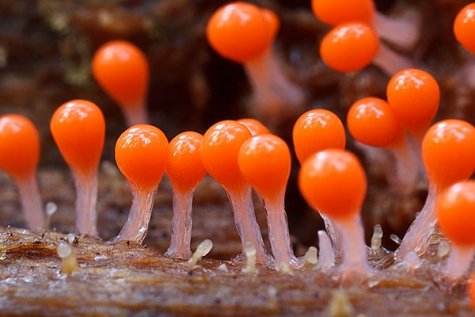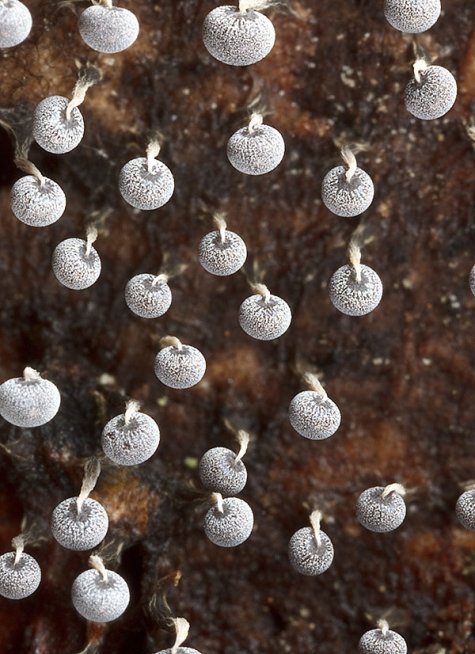Mushroom Week stories: slime molds
Most of the time they stay hidden as amoeba-like cells somewhere in decaying plant matter. At that stage they can’t be seen with a naked eye. Only when the environment becomes sufficiently humid in rainy weather they embark on the slime part of their life cycle, which has a strange name – plasmodium. In that stage they feed on everything that comes in their way and that they can cope with – decaying plant matter, bacteria and other microscpopic matter. When the “stomach” is full (of course the slime molds haven’t a proper stomach as such) the drying plasmodium produces variously shaped spore carriers (sporangia) and the life cycle starts again.
There are plenty of slime molds in the forests at Rõuge. Mostly they are so small that in order to find them you must sit down at some decaying tree trunk for a very careful inspection. Sometimes the colonies are brightly coloured and visible from far away.
The photos here show the fruiting bodies or sporangia of two slime mold species. The little white “balls” have a diameter of about 0,5 mm. The red clubs are 1 mm.
Plenty for the eyes to feast on.










